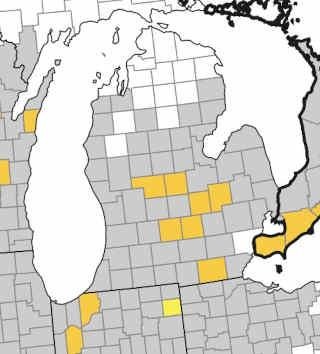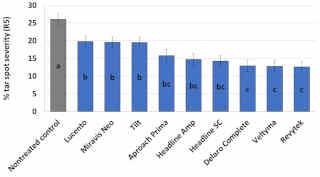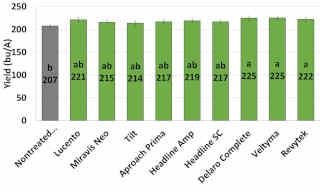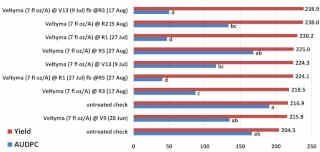By Jill Check and Martin Chilvers
What is tar spot?
Tar spot is a disease of corn that was first found in Michigan in 2016. Tar spot is caused by Phyllachora maydis, a fungus that infects the corn leaves and creates black spots called stroma. Within the stroma, the fungus produces spores that continue to infect throughout the growing season. With long periods of conducive environmental conditions, high disease severity can reduce yield and test weight and result in plant lodging. An integrated management approach can help protect against losses due to tar spot.
Should I be concerned about tar spot in 2022?
Since tar spot has been detected in Michigan, the greatest disease severity and losses have been in 2018 and 2021. These years were markedly wetter on average than other years. These conditions favor tar spot infection. Morning dews, lingering fogs and rainy days provide extended leaf wetness durations that drive disease severity. To date, 2022 has been relatively dry with minimal leaf moisture events, which has slowed disease development. In 2021, tar spot was easy to find by mid-July. This year is a different story with reports only starting to come in at the end of July or beginning of August.
How do I identify tar spot?
Tar spot lesions are hard, black, raised spots that are typically 1/16 to 0.75 inches in diameter. Lesions form on the upper side of the leaf and can protrude through the bottom. Tar spot is distinct from other diseases but is most commonly confused with corn rust infections and insect frass (bug poop). Rust pustules can be similar in and but will erupt through the leaf surface leaving a torn margin. Rust spores can be rubbed off the leaf surface. Tar spot can be distinguished from insect frass by using water to wash the leaf surface. Insect frass will wipe off with a little moisture, while tar spot lesions are embedded in the leaf and will not rub off.
If in doubt, symptomatic leaf samples can be sent to MSU Plant and Pest Diagnostic Services. Pictures of suspected tar spots can also be sent via email to chilvers@msu.edu or via Twitter to @MartinChilvers1. Samples and pictures of suspected tar spot help us track the development of the disease, which is documented at ipmPIPE.

Tar spot confirmations in yellow as of Aug. 5, 2022. Source: https://corn.ipmpipe.org/tarspot/
How should I manage tar spot?
Hybrid resistance
Utilizing hybrids tolerant to tar spot will continue to be an important factor in management. Unfortunately, no hybrids are completely immune to tar spot, but there are differences in hybrid susceptibility. Together with industry colleagues, we are working to screen hybrids to assess tar spot tolerance and provide growers resources for hybrid selection. We are also working with other researchers such as MSU’s Addie Thompson to identify genetic sources of resistance to tar spot to guide breeding efforts. Be sure to discuss tar spot tolerance with your seed salesperson.
Fungicide application
Fungicide applications can help slow disease development. Multiple mode of actions have been found to be efficacious against tar spot. In general, we suggest using products that contain multiple modes of action. These products should give better control than a single mode of action and help slow the spread of fungicide resistance. In trials replicated across Michigan, Illinois, Indiana, Wisconsin and Ontario, Delaro Complete, Veltyma and Revytek were best at reducing disease severity and protecting yield. However, other products still provided significant protection from tar spot and had higher yields than the non-treated control. A handy fungicide efficacy chart is available at the Crop Protection Network).

Disease severity following different fungicide product applications from a 2021 multistate uniform fungicide trial. Fungicide applications made at R1 growth stage.

Yield following different fungicide product applications from a 2021 multistate uniform fungicide trial. Source: Fungicide efficacy during a severe epidemic of tar spot on corn in the United States and Canada. Plant Health Progress (https://doi.org/10.1094/PHP-02-22-0012-BR).
Fungicide timing
Fungicide timing is critical in tar spot management. A single well-timed application can offer protection similar to two applications. In most years the best timings are likely between VT/R1 and R3. Early vegetative applications are likely too early to protect for the duration of the season. Particularly in a year like 2022, where disease is late to develop. Fungicide applications beyond R3 might be too late, however, even at the beginning of dent (R5) there is still considerable dry matter accumulation in kernels, so keeping plants healthy up to physiological maturity is important.
To aid in determining if weather conditions are suitable for disease development, the smart phone app Tarspotter aims to assist in fungicide timing for tar spot by predicting periods of increased risk of disease. More information is available at Tarspotter, the Corn Tar Spot Disease Forecaster.

Fungicide timing trial results from 2021: Yield and relative area under the disease progress curve (a measure of disease severity throughout the growing season) at different application timings.
Should I spray a fungicide in 2022 and if so, when?
Because tar spot appeared late this year, many are now deciding whether to apply a fungicide. If you are trying to decide whether to spray, consider these points:
- Current disease severity level: We consistently see a stronger return on investment of foliar fungicides in years of high disease pressure. Get out and scout! To date 2022 has seen low levels of tar spot or other diseases.
- Crop growth stage: Although in most years, a fungicide applied between VT/R1 to R3 sprays tend to reduce disease and protect yield best, sprays as late as R4 and perhaps the beginning of R5 may offer some yield protection if disease is late to develop.
- Hybrid susceptibility: Response to fungicide is dictated by hybrid susceptibility. A highly tar spot resistant hybrid will often respond to a lesser extent than a susceptible hybrid.
- Cost of application and logistics: Logistics and cost of application should be factored into the decision. Do you own application equipment, or do you need to schedule an applicator? If necessary, fungicide products can be kept until next year if stored correctly.
- Check strips: Be sure to leave check strips. You’ll never know how things would have worked out if you don’t have check strips.
Source : msu.edu